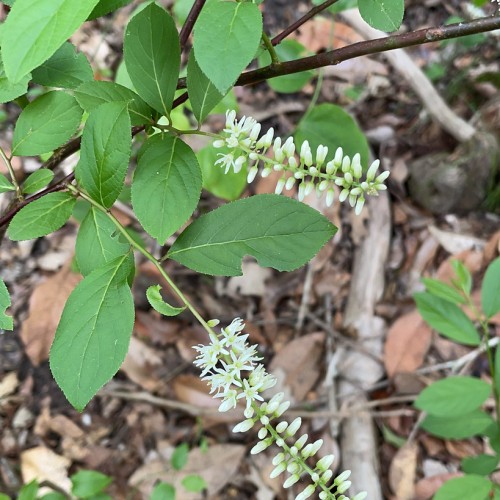
Virginia sweetspire
Itea virginica
Cycle:
Perennial
Watering:
Frequent
Hardiness Zone:
5 - 9
Flowers:
Flowers
Sun:
Full sun,part shade
Fruits:
Fruits Ready In Fall
Edible:
Yes
Leaf:
Yes
Growth Rate:
Low
Maintenance:
Low
Drought Tolerant:
Yes
Salt Tolerant:
Yes
Care Level:
Medium
watering
Virginia sweetspire should be watered once a week, using enough water so that the soil is evenly moist but not soaked. The amount should be approximately 1 inch of water per week. Make sure to monitor the moisture level in the pot; if the soil feels dry to the touch, you may need to water a little more frequently. During periods of extreme heat, Virginia sweetspire may also need to be watered more frequently. It can also tolerate dry spells, so if it experiences heavy rain during the growing season, you may not need to water it as often.
sunlight
Virginia sweetspire should receive plenty of sunlight throughout its growing season. The plant prefers to be planted in areas that receive full sun to partial shade, preferably an area that receives 4-6 hours of direct sunlight each day. This will help promote the best blooms possible. Keep in mind, however, that the plant species can tolerate more sun or less in various climates, so keep an eye on the plant to determine what amount of sun is best.
pruning
Virginia sweetspire is a deciduous shrub and is typically pruned in late winter to early spring. Pruning is done to shape the shrub, remove dead and diseased branches, and promote new growth. When pruning Virginia sweetspire, it is important to be careful not to prune too much at once, as this can leave the plant more vulnerable to disease. To shape the shrub, it is best to prune any dead or damaged wood first, and then use pruning shears to shape the plant into whatever desired shape. Pruning back any long, scraggly branches or stems will help to keep the shrub looking neat and even, and will also help promote new growth from the base of the plant. More drastic pruning can also be done, if desired, in order to reduce the size of the shrub or to make room for other plants. If this is done, however, it is very important that only a small portion of the shrub is pruned at once, and that the shrub is given time to re-establish itself between pruning sessions. Overall, Virginia sweetspire is a hardy plant and responds well to pruning. A moderate amount of pruning each year is recommended to keep the plant healthy and looking its best.
